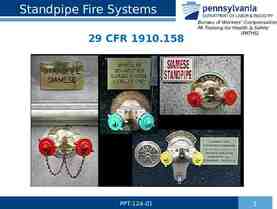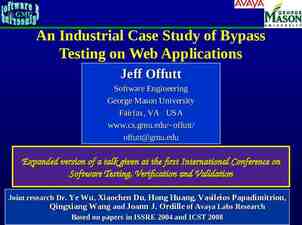COMMUNICATIONS ATC RADIO
23 Slides1.42 MB
COMMUNICATIONS ATC RADIO
1. INTRODUCTION TO RADIO Communication is an important part of everyday life. We need to pass on information, thoughts & ideas from one person to another. This is important in a military environment as it can be important in the success or failure of a mission. Using radio waves, people can communicate all over the world. Radio has limitations and benefits. You will now be taught how simple radio systems work and how to operate it correctly & efficiently.
ATC Radio The ATC has its own nation wide system of radio stations for you to contact. This was set up just after WW2 to train Cadets to use HF (High Frequency) radio equipment – this is called a NETWORK. A Directed Network (NET) is a group of radio stations each operating on the same frequency. This is always controlled – there will always be a Network Control Station (NCS) controlling radio communications. Control by NCS will look at: Radio of Discipline being observed by users. Adherence to correct procedures. Type of Network being operated. Only 1 station can act as the NCS at any one time.
Free Network A network operating without an NCS is called a ‘Free Network’. Here, each of the stations is permitted to freely contact any other station they wish without NCS permission.
Directed network On a direct network, stations may only communicate with the express permission of the NCS who will in turn dictate priorities & orders. This means the NCS will do most of the communicating being the first point for any message.
Additional Information The ATC Radio Network is established to encourage use of correct service radio procedures. Used correctly, the information transmitted can be of vital importance in assisting safe & successful operations of your activities. Incorrect use of non-standard procedures & phraseology leads to misunderstanding with potential dangerous consequences. The Services (RAF/BA/RN) must always be aware that a potential enemy may be able to receive transmitted information & use it to their advantage. A radio station is the smallest part of any radio network. The station will have at least one radio set capable of transmitting & receiving – this is known as a Transceiver.
2. RADIO PROCEDURES Correct Radio procedures can be remembered by using the term ‘SAD’ This stands for: Security Accuracy Discipline
Security: Identity of a station must be kept as secret as possible. This is done by allocating a unique callsign allocated to each – this consists of 3 letters followed by 2 number: MRQ 23 M Denotes that the callsign is allocated to the UK R Indicates the station is associated with the RAF Q Is an indication of the geographical location 23 Serial number issued to the station by HQAC If the station has mobile equipment an extension is given: MRQ 23 M1, M2, M3 .etc (for number of hand sets).
There may be more than one listener highlights another important point. They may be unauthorised – these are called Interceptors. You must always assume that for every transmission there are 3 elements: The sender The listeners The interceptors Service radio procedures have been developed to safeguard the meaning of a message from an interceptor and also so the authorised listeners understand the message. These procedures enable messages to be kept short – saving power (for mobile units) and allowing more stations to use the Network.
When Using the Radio: NEVER Use unauthorised codenames Use personal names or nicknames Use slang, jargon or foul language Transmit aircraft types, roles or weapon loads in clear speech Transmit details of arms or ammunition, particularly their movements Transmit Unit ID & locations in clear speech ALWAYS Use your Callsign at the start of a transmission Use only authorised codenames & codewords (described later) Ask a station to “Authenticate” if you think it is not genuine
Authentication: A method of challenging any station that is using your network. The system used by the ATC asks the station to respond to one of four codes: Alpha Bravo Charlie Delta Alpha – reply would be the stations Squadron Number Example: MRC 28 This is MRC 56 Authenticate Alpha Over MRC 56 This is MRC 28 I Authenticate Alpha Figures 1384 Over MRC 28 This is MRC 56 Correct Out
Bravo – Reply would be the station’s Squadron Number in reverse For our Squadron it would be 4831 Example: MRC 28 This is MRC 56 Authenticate Bravo Over MRC 56 This is MRC 28 I Authenticate Bravo figures 4831 Over MRC 28 This is MRC 56 Correct Out Charlie – Reply would be the station’s Squadron Number added to the date (day of the month). For our Squadron on the 10th Jan the answer would be 1394 (1384 10) Example: MRC 28 This is MRC 56 Authenticate Charlie Over MRC 56 This is MRC 28 I Authenticate Charlie figures 1394 Over MRC 28 This is MRC 56 Correct Out
Delta – Reply would be the call sign number added to the date (day of the month). For call sign MRV 92 & on the 21st July the answer would be 113 (92 21). Example: MRC 28 This is MRC 56 Authenticate Delta Over MRC 56 This is MRV 92 I Authenticate Delta figures 113 Over MRC 28 This is MRC 56 Correct Out Should a reply NOT be satisfactory with the above examples, stop immediately and contact a member of Staff. Authenticating Bravo & Charlie should not normally be used when challenging a mobile unit. There are other aids to security including use of CODES, COMMON APPOINTMENTS & VEILED SPEECH. ANY QUESTIONS?
Accuracy: Remember the following: Voice Clear, logical & Brief. Normal conversation – speak clearly, distinctly. Do not use hesitation – “erm” or “umm” etc. Microphone Don’t turn your head away when taking. Do not touch it with your mouth (apply distance – 50mm) Transmit Only press the PTT switch when ready to speak. (Press To Transmit) Do not release the switch until you have finished talking. Ensure the PTT has released properly (not stuck on).
Prowords: Meanings: THIS IS Indicates the callsign of the sender is about to follow. OVER End of transmission to a listener – a reply is required. OUT End of transmission – no reply expected. WAIT OUT Your transmission has been received – a reply will follow later. WILCO Message received, understood & I will comply with instructions. ROGER I have received your last transmission satisfactorily. SAY AGAIN Request for repeat of whole or part of message. MESSAGE The transmission to follow will require writing down. FIGURES Used before groups of numbers sent digit by digit GRID Used prior to encoded reference or grid reference sent in speech. RADIO CHECK Report how you receive my transmission. BREAK I am separating the text/waiting for another station to reply. WRONG Your last transmission was incorrect. Correct version is .
Phonetics: A Alpha AL FAH O Oscar OSS CAH B Bravo BRAH VOH P Papa PAH PAH C Charlie CHAR LEE Q Quebec KEH BECK D Delta DELL TAH R Romeo ROW ME OH E Echo ECK OH S Sierra SEE AIR RAH F Foxtrot FOKS TROT T Tango TANG GO G Golf GOLF U Uniform YOU NEE FORM H Hotel HOH TEL V Victor VIK TAH I India IN DEE AH W Whiskey WISS KEY J Juliet JEWLEE ETT X X-ray ECKS RAY K Kilo KEY LOW Y Yankee YANG KEE L Lima LEE MAH Z Zulu ZOO LOO M Mike MIKE N November NO VEM BER
Numbers: 0 ZERO 1 WUN 2 TOO 3 TREE 4 FOW ER 5 FIFE 6 SIX 7 SEV EN 8 AIT 9 NIN ER Decimal DAY SEE MAL Thousand TOU SAND
Remember the following: Time of the Day Use the 24 hour clock with word hours missing. 13 40hrs “Time Wun Tree Fower Zero” Frequencies ATC hand held – VHF & UHF. (Very High Frequencies & Ultra High Frequencies) You are most likely to use short range equipment throughout your training and when on camps or exercises.
Discipline: NEVER Violate radio silence unless an emergency takes place. Compromise classified information via plain language. Make unnecessary over-long or unofficial transmissions. Identify yourself or Unit by name. Swear or lose your temper. Disclose ATC frequencies. Give phone numbers or addresses. ALWAYS Use correct voice operating procedure. Maintain a constant listening radio watch. Answer all your calls promptly. Think prior to transmission & make sure you know your message.
3. RADIO EQUIPMENT Base Stations – fixed installations at Squadron or Unit HQ. Reliable, stable and good power output. The range of UHF or VHF stations may exceed 50km. Mobiles – Can be vehicle or man portable equipment. Vehicle – to be strong enough to withstand shocks, bumps etc. Very efficient as it is powered from the vehicles battery. Effective range 30km. Portable – Hand held or back pack. Very robust to withstand elements, shock etc.
Other Equipment The types of equipment you are likely to come across as a cadet will be varied – your Staff will brief you prior to using it. Usage & Treatment Never: Hold a set by the aerial. Leave a radio unattended. Alter settings unless instructed. Transmit close to another radio. Always: Switch off after use Keep dry & clean Turn off additional radios at the same location on the same channel
Points to Note: The letters A,R,N,J indicate Army, RAF, Navy & joint use. The below code words will be used at the Squadron as operator titles: SUNRAY Officer Commanding (OC) WATCHDOG Squadron Warrant officer (SWO) SHOTGUN Armourer (WO Joerning) MANHOLE Admin Staff (Other staff) PLAYTIME Transport
ANY QUESTIO NS?




























